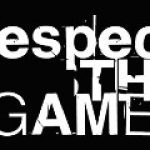As the Athletic Administrator, one of your key roles is to assess, review and provide direction for the growth of individual sport coaches and their respective (sport) program. Ideally, the coach and the Athletic Administrator collaborate on a regular basis to develop growth plans for the program and create a “blueprint” for current and future success.
To assist the Athletic Administrator in providing education-based feedback and direction, the National Standards for Sport Coaches is strongly endorsed by the OIAAA as the preeminent document to give clear benchmarks for education-based athletic programs. This document also serves as an excellent resource in educating parents and other stakeholders regarding the purpose and mission of interscholastic sport programs.
The National Standards for Sport Coaches was developed by SHAPE America (Society of Health and Physical Education, formerly AAPEHR). The full document can be purchased at the SHAPE America site:http://www.shapeamerica.org/standards/coaching/coachingstandards.cfm. The OIAAA strongly encourages each Ohio Athletic Administrator and athletic department to maintain a current copy of the National Standard for Sport Coaches to train coaches, athletes and parents of the expectations and outcomes for quality education-based athletic programs.
Coaching Standards and Benchmarks
Domain 1 — Philosophy and Ethics
Standard 1: Develop and implement an athlete-centered coaching philosophy.
A well-developed coaching philosophy provides expectations for behaviors that reflect priorities and values of the coach. An appropriate coaching perspective focuses on maximizing the positive benefits of sport participation for each athlete.
Benchmarks:
- 1. Identify and communicate reasons for entering the coaching profession.
- 2. Develop an athlete-centered coaching philosophy that aligns with the organizational mission and goals.
- 3. Communicate the athlete-centered coaching philosophy in verbal and written form to athletes, parents/guardians, and program staff.
- 4. Welcome all eligible athletes and implement strategies that encourage the participation of disadvantaged and disabled athletes.
- 5. Manage athlete behavior consistent with an athlete-centered coaching philosophy.
Domain 2 — Safety and Injury Prevention
Standard 8: Identify physical conditions that predispose athletes to injuries.
Athletes often join teams with pre-existing conditions or previous injuries that would preclude them from certain exercises or drills. The coach should be aware of such injuries and modify drills and exercises as appropriate.
Benchmarks:
- 6. Ensure that clearance for athletes to participate fully or partially in practices or contests is given by a parent, guardian, and/or medical professional.
- 7. Recognize health status, body structure, and physical conditions that predispose athletes to common injuries specific to the sport.
- 8. Be aware that an athlete’s lack of sleep and/or emotional state could warrant a change in practice plans.
Domain 3 — Physical Conditioning
Standard 13: Teach and encourage proper nutrition for optimal physical and mental performance and overall good health.
The coach must understand and teach appropriate nutrition and weight management practices. Counseling athletes about healthy eating is an important part of preparing athletes for sport performance. Proper nutrition and hydration are necessary to fuel the body.
Benchmarks:
- 9. Assist athletes in timing and selection of food options to fuel optimal energy production for practices and contests.
- 10. Assist athletes in regulating safe levels of hydration.
11. Provide accurate and timely information to athletes and parents/guardians about sound nutritional principles as part of training and preparation for competition.
- 12. Provide accurate and timely information about body composition and healthy weight management.
- 13. Be proactive in identifying potential eating disorders and referring athletes for appropriate professional assistance.
Domain 4 — Growth and Development
Standard 18: Provide athletes with responsibility and leadership opportunities as they mature.
Sport provides an atmosphere for trial and error through practice and competition. Sport also allows opportunity for athletes to be challenged by additional responsibility. Through these opportunities, athletes learn how to deal with conflict, engage in problem solving, and seek positive resolutions. The coach should engage athletes in opportunities that nurture leadership and teamwork that can be learned on the field and exhibited in life.
Benchmarks:
- 14. Teach and encourage athletes to take responsibility for their actions in adhering to team rules.
- 15. Design practices to allow for athlete input and self-evaluation.
- 16. Communicate to athletes their responsibility in maintaining physical and mental readiness for athletic participation and preparation for competition.
- 17. Encourage athletes to practice leadership skills and engage in problem solving.
- 18. Provide athletes with different tools to manage conflict.
- 19. Provide specific opportunities for athletes to mentor others.
Domain 5 —Teaching and Communication
Standard 24: Teach and incorporate mental skills to enhance performance and reduce sport anxiety.
Mental skill training assists the athlete in improving athletic performance. The variety of tools available allow the athlete to manage stress and direct their focus on their performance.
Benchmarks:
- 20. Demonstrate appropriate use of intrinsic and extrinsic rewards to enhance motivation and learning.
- 21. Share with athletes effective stress management coping strategies.
- 22. Utilize sound mental skills to build athlete self-confidence.
- 23. Help athletes to develop a mental game plan that includes pre-game preparation, a contingency plan for errors during competition, and how to avoid competitive stress.
- 24. Help athletes improve concentration by learning attention control strategies.
Domain 6 — Sport Skills and Tactics
Standard 29: Use scouting methods for planning practices, game preparation, and game analysis.
Preparing the athlete and/or team appropriately for competition is the responsibility of the coach. The coach should use appropriate scouting techniques that are in line with governing organizations and sport rules. Using resources available to evaluate opponents is a competitive advantage in preparing the athlete for competition.
Benchmarks:
- 25. Analyze opponent’s personnel to organize team for competition.
- 26. Create game plans by observation of opponent play, athlete statistical information, and previous competitive experience.
- 27. Make adjustments in strategies for practice and competition by identifying patterns and styles of play of opponents.
- 28. Develop scouting tools for collecting and organizing information about opponents.
Domain 7 — Organization and Administration
Standard 31: Be involved in public relation activities for the sport program.
Public relations is the responsibility of the coach. Effective communication skills allow the coach to share the mission and values of the program and enlist support from the community. The coach must take every opportunity to be an advocate for the participants in the program.
Benchmarks:
- 29. Organize and conduct effective informational meetings before, during, and after the season.
- 30. Communicate policies and ongoing program activities to athletes, staff, parents/guardians, administrators, and/or the public.
- 31. Prepare athletes to be involved with public relation activities.
- 32. Advocate the value of the sport program through positive communication with the media and others.
Domain 8 — Evaluation
Standard 40: Utilize an objective and effective process for evaluation of self and staff.
The coach should assess the effectiveness of personnel that directly affect athlete and team performance. The evaluation should collect direct feedback from all program athletes and identify ways to improve techniques and coaching style. Self-evaluation is a critical source of information for professional growth and development.
Benchmarks:
- 33. Collect input from athletes, parents, guardians, coaches, and other stakeholders regarding athlete satisfaction, perception of season goals, and coaching performance.
- 34. Conduct periodic self-reflections on coaching effectiveness.
- 35. Seek feedback from experienced coaches to evaluate practice sessions, discuss observations, and implement needed change at regular intervals.
- 36. Use formal written evaluations to assist in selecting and retaining program personnel.
- 37. Be diplomatic when providing feedback on personnel evaluations or hiring decisions.







